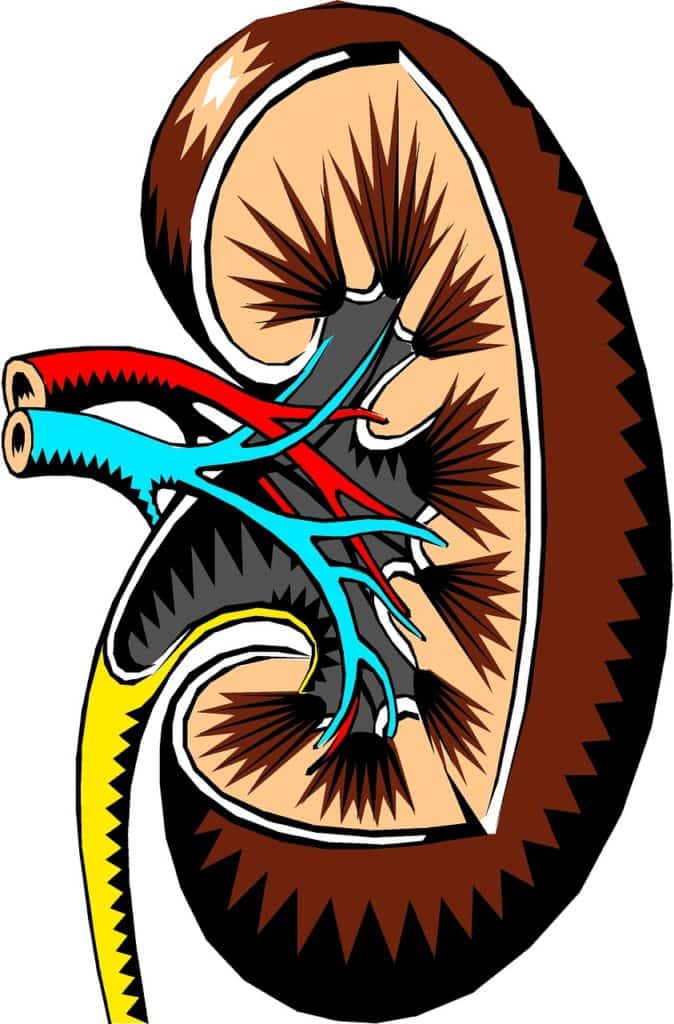Symptoms of severe (complicated) UTI mean that the UTI has progressed to a stage in which it cannot be reversed without medical intervention.
symptoms of severe (complicated) UTI are more severe than ordinary UTI and more advanced.
if you have any one of them you should consult your doctor immediately.
so in a quick listing, the symptoms of severe UTI are:
1) flank pain
2) fever and chills
3) nausea and vomiting
4) severe pain with urination
5) blood in urine
6) pus (white blood cells) in urine
7) severe lower back or abdominal pain

before we begin diving into our subject I just want to take the chance to remind people that many of the UTI incidents are caused by having a weak immune system among other things (of course) but this is one of the most important.
we cannot improve a weak immune system by only eating healthy because simply our food does not contain all the vitamins and minerals necessary for strengthening our immune system.
so we will need to take these vitamins and minerals in a more concentrated way, we can achieve this by taking multivitamin tablets like centrum which is basically one of the best and most complete options for multivitamins available in the market.
take centrum once a day with food.
here you can check out centrum price on amazon, of course, if you are pregnant, breastfeeding, or taking other medications or supplements consult your doctor before use.
also, take centrum silver men or centrum silver women instead if you are above 50 years old.
now back to our subject.
we will talk in more detail about our subject and after that, we will discuss each one of these symptoms separately.
now because the bacteria that cause the UTI to enter the urinary tract from the urethra and then go through it to the bladder, the UTI will be called a lower urinary tract infection.
note: the urethra is considered in the lower urinary tract region this scenario is most likely to happen with women more than men because the urethra is longer in men than in women.
in the how to prevent uti article you will find more information about this subject.
this lower urinary tract infection (lower UTI) is not just lower in the area it’s in, but it’s also is lower in its danger than the upper urinary tract infection (upper UTI). as the bacteria that cause the UTI goes up the urinary tract, the infection gets more and more severe.
the lower UTI is also called uncomplicated UTI, while the upper UTI is called complicated UTI. so to sum it up the upper urinary tract infection is the severe UTI.
the upper UTI mostly occur in the kidney which something that is very dangerous and requires immediate medical attention. in this case, it will be called a kidney infection or pyelonephritis.
in women, they are most likely to have lower UTI at the beginning then if left untreated it might progress to the more dangerous upper UTI.
while in men despite the fact that UTI occurs less in men, but if it did it’s more likely to be an upper UTI (kidney infection), more likely than women. that’s why for doctors if they see a male patient who has a UTI, they work first to investigate the possibility of a kidney infection (pyelonephritis).
But that does not mean that a man cannot have a lower UTI at first or a woman cannot have an upper UTI first, it’s just a matter of the most likely that’s all. in general, whether you are a man or a woman, If you suffer from the symptoms of severe UTI you should seek medical attention immediately.
now we will discuss each one of the symptoms of severe uti separately.
the symptoms of severe uti are
1_ flank pain:
this symptom of severe UTI can be mistaken with another disease. people who have kidney stones also suffer from flank pain, but I suspect that the flank pain in people with kidney stones can be much more severe and intense.
in either case, both of the kidney stones and upper UTI are dangerous diseases that,s why you should go and visit the doctor as soon as possible. the flank pain of the upper UTI or kidney infection can be on the back of the abdominal region below the ribs and above the pelvic area. mostly in the back region below the ribs.
meaning that it’s in the upper back area where the kidneys are.
this symptom cannot be noticed in the case of a lower uti, basically because lower uti is mostly without pain.
sometimes the lower UTI can be painful but the pain will be in the lower back or abdominal region not in the upper back region.
so if you know that you have a UTI and then with time a pain in the flank area begins then you must report to the doctor immediately, because the UTI may have progressed into severe UTI.
2_ fever and chills:
this symptom is specific for the upper UTI (severe UTI) condition. the lower UTI condition Cannot produce any sign or symptom related or close to the fever and chills produced by the upper UTI condition.
So if you previously had a UTI like you began to notice some symptoms of a mild UTI like frequent urination or burning sensation or so, then after it in a short amount of time you began to notice that you have some fever going on, then probably the UTI have become more developed and progressed into severe UTI.
in this case, as soon as you notice that you have some fever or chills or both of them go to the doctor to check you out.
the WebMD website confirms this fact by saying that fever and chills are a sign that the UTI has reached your kidneys.
now sometimes the lower urinary tract infection (the not severe UTI) can produce some fever or chills but it will not be as nearly as strong as the fever and chills produced by the kidney infection (upper UTI).
the upper UTI or the kidney infection fever is above (101 F), while the lower UTI fever is lower than that.also, the upper UTI produces a shaking chill, not a mild one.
in most cases, the doctors will give you some strong antibiotic courses in order to eradicate the bacteria completely. be sure to stick to that antibiotic course (if given) and complete it till the end even if the symptoms got better.
in my case, I was given the ciprofloxacin (ciprodar) antibiotic twice daily for ten days.
3_ nausea and vomiting:
this is a sign that applies exclusively for the kidney infection (upper UTI or complicated UTI).
if you have a UTI and you notice that you are somewhat nauseated then contact the doctor immediately or even go to the emergency department of a hospital near you.
nausea or vomiting or both can be signs that the infection has reached your kidneys, so don’t waste time waiting for the infection to progress more.
mild UTI can produce a malaise feeling that is maybe similar for some people to the nausea feeling produced by the severe UTI but it will be definitely a lot less strong than that of the severe UTI.
almost every infection produces a malaise feeling which is a feeling of unease and discomfort that is maybe accompanied by a loss of appetite, that’s why some people mistake it for nausea.
4_ pain with urination:
now, this is a sign that can be noticed with the lower UTI (uncomplicated UTI), in fact, this is how most people suspect that they have UTI, because they have a burning sensation during urination.
only this time in the case of an upper UTI (complicated UTI or kidney infection), the burning sensation will be more severe.
it will be too hard for the person suffering from severe uti to even go to the bathroom and urinate.
some people might not have a burning sensation But the burning sensation might begin if their UTI progress into severe UTI. In any case, the burning sensation will be present if not more severe with the upper UTI.
5_ blood in urine:
when the uti becomes more and more severe, blood in urine can be present.
now as the urination process gets increasingly more painful the urine also can get slightly pink in color and may progress from that point to deep red.
this is due to the UTI bacteria are causing deep wounds to the inner lining of the urinary tract. the UTI bacteria use claws or hinges to attach themselves to the inner walls of the urinary tract.
at first, these hinges or claws will produce scratches that do not produce blood. but, as the bacteria quantity gets bigger and bigger and with time these hinges or claws will cause wounds that produce blood that will appear with the urine.
now by the time, the blood appears in the urine the whole process of urination will be too much painful and you would have already got to the doctor by that time.
blood may already be present, but just not in enough quantity to change the color of the urine. this can be detected in a laboratory urine test.
not all the cases of painful blood in the urine are caused by the UTI, other disorders can also produce blood in urine, however,
painless blood in urine cannot be caused by a UTI.
other diseases can cause it. UTI, produce only painful blood in urine.
ps: kidney stones can also produce painful blood in urine.
blood in urine cannot be caused by a lower UTI (uncomplicated UTI or mild UTI), this is also a sign exclusive to the severe or upper UTI.
6_ pus (white blood cells) in urine:
this is a sign that is rare to happen. in addition to its rarity, it can only be detected through laboratory testing. a mild uti cannot cause pus in urine.
if you are having a UTI then this is a serious sign that means that the UTI has progressed to an advanced stage, so you should go to the hospital as soon as possible.
other conditions other than the uti might also cause pus in urine including sexually transmitted diseases like gonorrhea and viral infections.
pneumonia in the elderly, sepsis, and tuberculosis can also produce pus in urine.
drugs like acetaminophen (paracetamol) can cause pus in urine as a side effect. proper antibiotic treatment by your doctor can get you rid of this condition alongside with the uti.
6_ severe lower abdominal pain:
now this symptom may not be present when someone is having a severe upper UTI, because this is a symptom of the mild lower UTI.
but in the case of a severe UTI, the pain can be more severe and painful, which means that the lower UTI have gotten stronger.
increased lower UTI pain means that the lower UTI is getting stronger and can go up and cause an upper UTI (kidney infection) if it hadn’t caused it already.
__________________________________________________
these were the symptoms that the severe UTI cause, some of them were already caused by the mild uti only the severe upper UTI will make them more severe.
others can only be caused by the severe UTI, and these can be signs to distinguish between the mild UTI and the severe UTI.
so when you see any of these signs and symptoms, there is no doubt that you have a severe UTI, or at least your UTI condition is progressing into severe UTI.
these signs and symptoms were for adults between 18 to 60 years old.
most of the other people groups have almost the same signs and symptoms only with small differences depending on the particular people group the patient belongs to.
because of there vulnerability and decreased tolerance to infections like the UTI, every patient of the newborn, infants, children, and elder people groups, if infected with UTI, then it’s considered a severe UTI.
because any uti can be dangerous to those people groups.
elderly people
for elderly people, signs and symptoms are usually the same as for the adults between 18 and 60 only with an additional symptom that the uti in elderly only produce.
this additional symptom is exclusive only for the elderly which is confusion.
confusion, dizziness, poor coordination, and sometimes falling are all signs that your elder patient may suffer from a severe UTI.
the regular UTI signs or symptoms that we see in adults between 18 and 60 may not be noticeable in elder patients suffering from UTI.
because most of these signs and symptoms like fever, chills, back pain are produced by the immune system of the adults between 18 and 60.
while in elder patients the immune system is not so strong so it won’t be able to interact with the infection causing those fever and pain symptoms the same way in adult people groups.
so the regular symptoms of UTI may not be present in elder people or maybe present but to a lower degree.
now, what about infants or young children.

are there any signs or symptoms of UTI that the infants may have other than those of the adult people group?
well, they may have no different signs and symptoms from that of the adults but their way of expressing them may differ.
for instance, a newborn or an infant cannot tell you that he or she has a burning sensation with urination, so what they will do is cry more and louder than usual.
but if they have a UTI, their urine can smell differently so you can use this sign as a way to know if your child has a UTI. diarrhea and loss of bowel control and loss of control over urination for children at an older age where they can control their urination process can be a sign of UTI in older children.
diarrhea can also be present in newborns and infants that have a UTI. loss of appetite or poor feeding is a major sign that your newborn or infant or child is suffering from some kind of infection. cloudy urine can also be present.
so if you think that your infant or child is having a UTI try to observe their urine if it looks strange or if it smells differently. if it is then you might wanna take your child to the doctor.
now what about pregnant women?
pregnant women have an increased risk of having a UTI. the signs and symptoms of UTI in pregnant women are the same as in the adult people group.
but if a pregnant woman has any degree of UTI, she must be treated immediately, because of the possible dangers that the UTI might have on the child and also on the mother.
so, any UTI in a pregnant woman is considered a severe UTI.
the mother’s immune system and the whole body is not functioning at it’s best due to the pregnancy. so proper care must be taken.
pregnant women must go to the doctor every now and then to check out if there is any sign of infection like the UTI is present.
so we have reached the end of this article. in the end, I would like to thank you guys for tuning in with me till you have reached the end of this article.
I’m a pharmacist who tries to educate people about urinary tract infections and I look at it from a pharmaceutical and medical point of view. feel free to check out my other articles on this website. thank you and goodbye.
